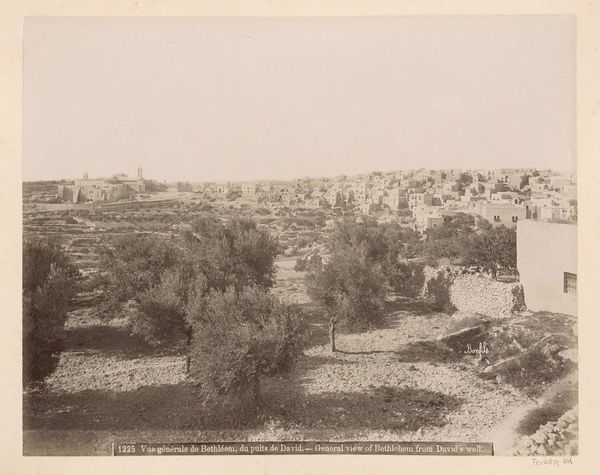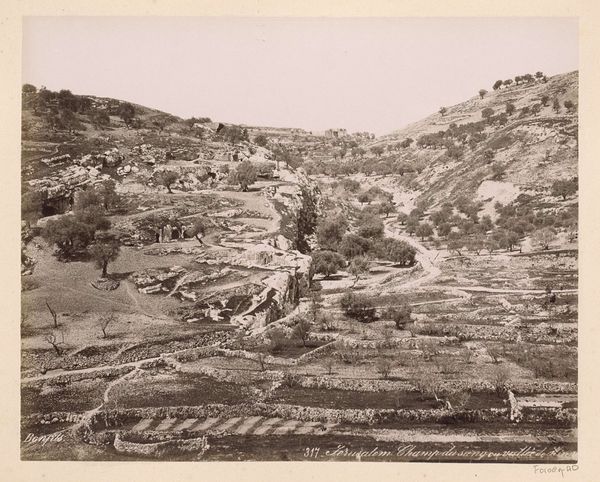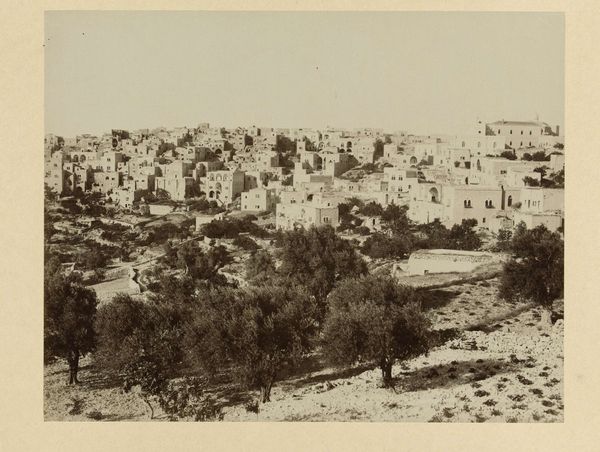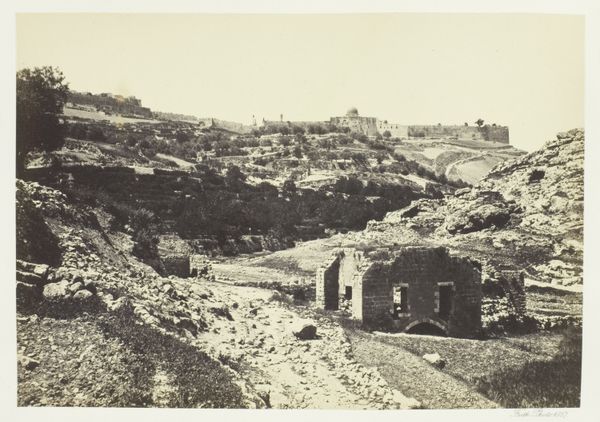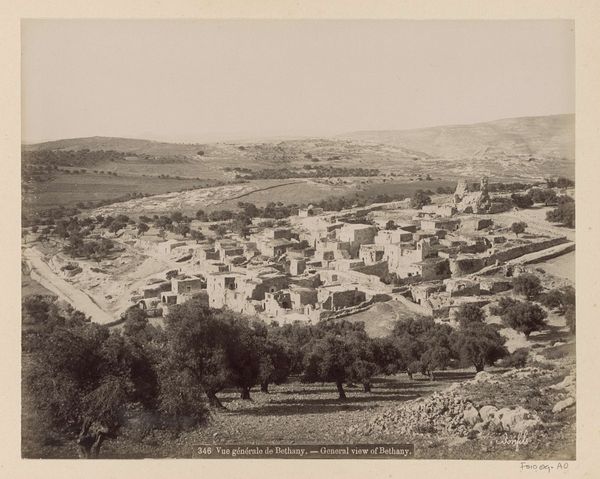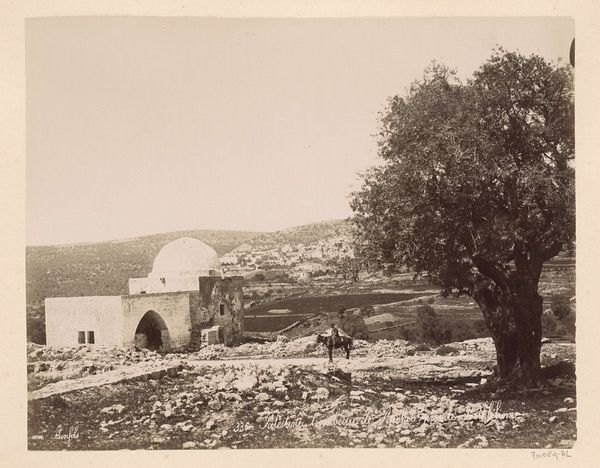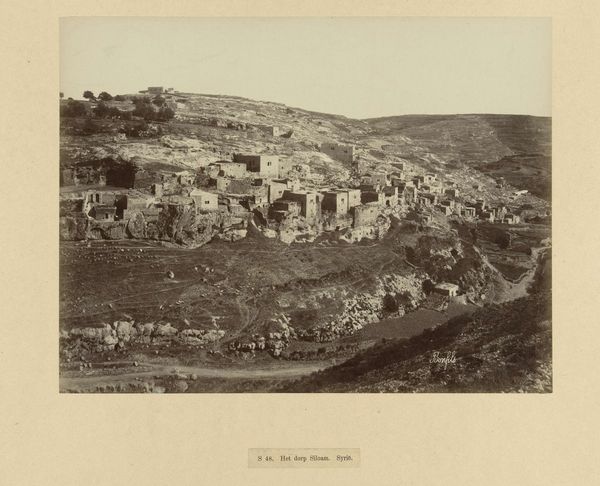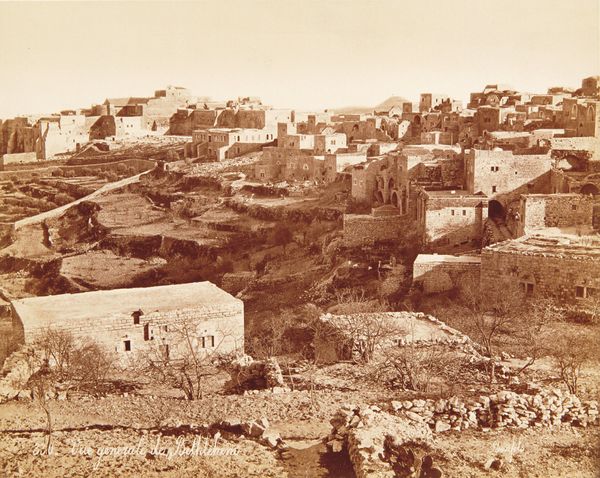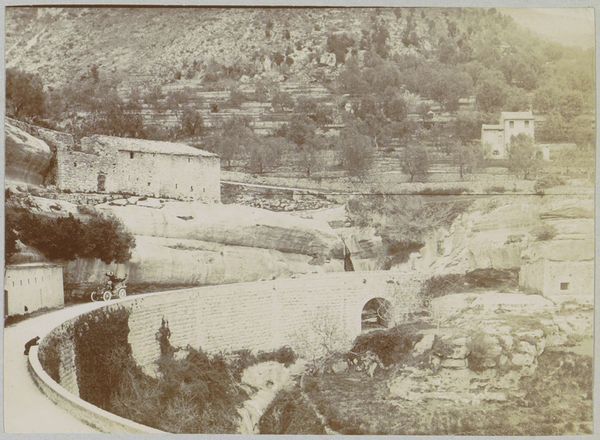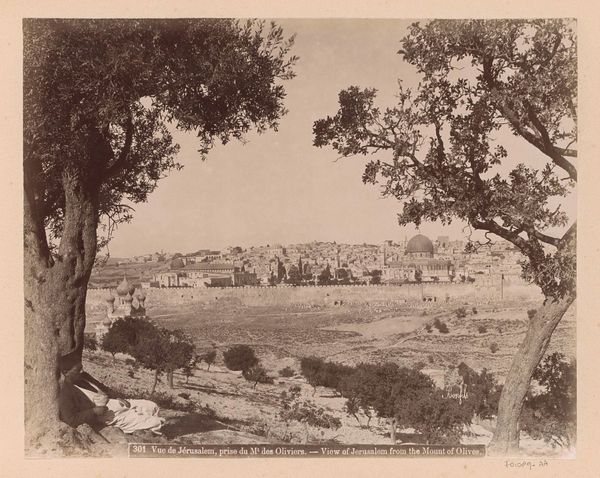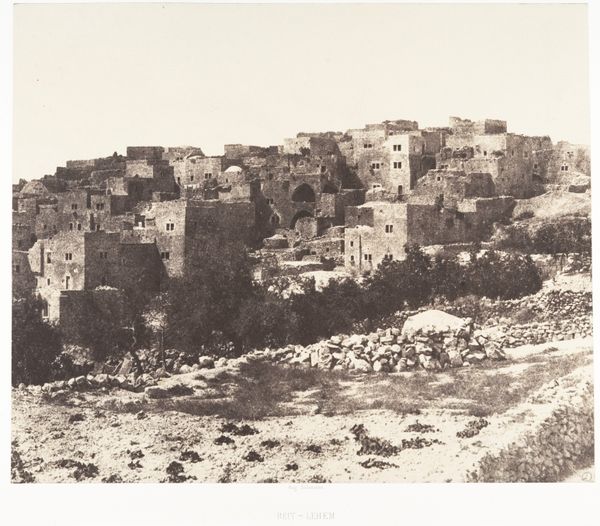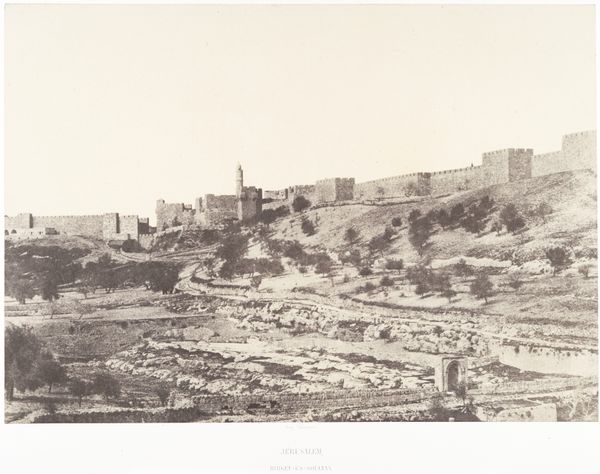
photography, albumen-print
#
landscape
#
photography
#
orientalism
#
cityscape
#
albumen-print
Dimensions: height 222 mm, width 279 mm
Copyright: Rijks Museum: Open Domain
Curator: This albumen print, titled "Gezicht op Hebron," or "View of Hebron," dates from around 1867 to 1895 and is attributed to Maison Bonfils. It resides here at the Rijksmuseum. What’s your initial take? Editor: My first impression is one of subdued grandeur. The sepia tones give it a timeless, almost biblical feel, don't they? It's as if time itself is sedimented into the image, creating a profound connection to history. Curator: That feeling is precisely why orientalist photography holds such enduring, yet complicated appeal. Bonfils, operating in that era, aimed to document, but his gaze was undoubtedly shaped by colonial power dynamics, influencing how Hebron and its people were portrayed. The very act of framing this scene becomes an act of interpretation—or even appropriation. Editor: I see what you mean. Yet, consider the symbols inherent in the image. The cityscape, nestled in the hills, could symbolize resilience and continuity, virtues deeply valued across cultures. Even the arrangement—the foreground figures, the wall, the distant town—evokes a journey, perhaps a pilgrimage, all laden with cultural meaning. Curator: Perhaps. But even such symbols become instruments in orientalist narratives. The people, the "foreground figures" as you call them, appear static, almost staged. The photo reduces them to components of the landscape. The imbalance in power and representation is unmistakable. We must not turn a blind eye to the ethics of viewing images like this, its complicity in solidifying the orientalist worldview. Editor: Certainly. But beyond that framework, I still see something vital: an attempt to preserve a place, to create an icon. We must question the photographer's motives but can still contemplate the echoes of cultural memory residing in this print, as a reflection of shared hopes and struggles. Curator: A nuanced point. Understanding the intertwined legacy of both creator and image empowers us to look critically at historical narratives and consider their continued effect. This photo asks us not only where we were, but also where we are going. Editor: I agree. This has shifted my perspective; viewing its emotional impact beside the impact on a broader culture has revealed new aspects of this image I didn't realize were there.
Comments
No comments
Be the first to comment and join the conversation on the ultimate creative platform.
